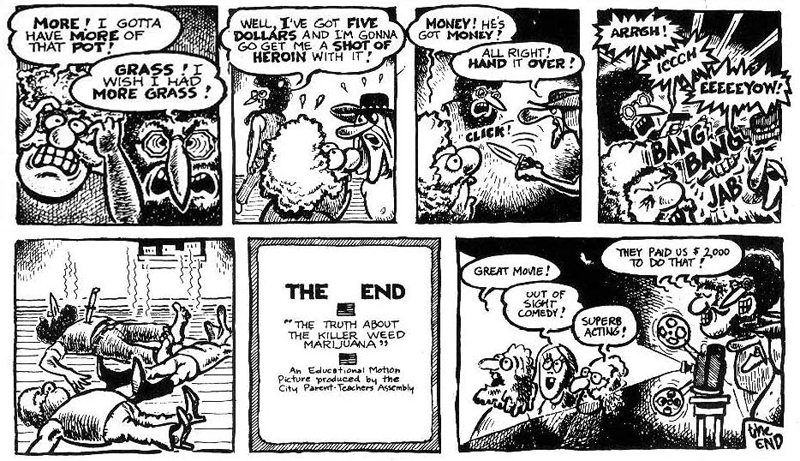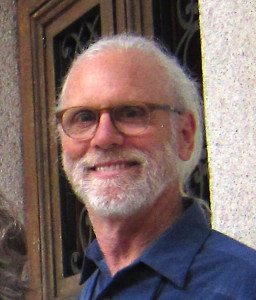View on Medical Marijuana
 Cannabis specialist Jeffrey Hergenrather, MD, and President of the Society of Cannabis Clinicians, offers critique of North Florida pharmacist Karl Metzger’s dismissal of Medical Marijuana. Hergenrather introduces us to the field of whole plant therapeutics, and sheds light on the amazing synergistic properties of the cannabinoids and terpenes present in marijuana.
Cannabis specialist Jeffrey Hergenrather, MD, and President of the Society of Cannabis Clinicians, offers critique of North Florida pharmacist Karl Metzger’s dismissal of Medical Marijuana. Hergenrather introduces us to the field of whole plant therapeutics, and sheds light on the amazing synergistic properties of the cannabinoids and terpenes present in marijuana.
Metzger’s article appeared on the website of the Bay County Green Party of Florida, entitled “The Fallacy of the Medical Marijuana Movement – A Pharmacist’s Perspective.” It can be found here.
With Medical Marijuana appearing on the ballot in Florida in November, as Amendment 2, the battle is heating up for the hearts, minds, and votes of Floridians. It is essential that voters have an informed view. In that interest, Hergenrather’s response to Metzger’s article is presented here. — submitted by Steve Showen, Green Party of Florida
From Jeffrey Hergenrather, MD:
I believe that it is very important to integrate the pharmacist Metzger’s viewpoint into a discussion of the use of cannabis as medicine. Mine is a clinical perspective coming from consulting with thousands of patients for over 35 years. Lacking that clinical perspective Metzger’s viewpoint is flawed in many respects.
To begin with, when patients are recommended cannabis and cannabis extracts and products, it’s true that we want to have measured medicine in administering with the most safety and efficacy while minimizing adverse facts. It is also true that cannabis is one of the safest substances known to man. In his conclusion, Francis Young, DEA administrative law judge, on page 68 of his 1988 judgement said:
The evidence in this record clearly shows that marijuana has been accepted as capable of relieving distress of great numbers of very ill people, and doing so with safety under medical supervision. It would be unreasonable, arbitrary and capricious for DEA to continue to stand between those sufferers and the benefits of this substance in light of the evidence in this record. The administrative law judge recommends that the Administrator conclude that the marijuana plant considered as a whole has a currently accepted medical use in treatment in the United States, that there is no lack of accepted safety for use of it under medical supervision and that it may lawfully be transferred from Schedule 1 to Schedule 2. The judge recommends that the Administrator transfer marijuana from Schedule I to Schedule II.
The pharmacist seems concerned that having the right dose will prevent intolerance which would eventually “render medication useless”. This has not been the case in cannabis medicine. Patients find an effective dose by self titration. In my patient population that I have followed closely for 10-15 years or longer the patients use approximately the same amount of cannabis from year-to-year. Some describe increasing their dose with a flareup of pain or autoimmune disorder. After the flare up the dose of cannabis diminishes again, oftentimes to little or none depending on the condition. Most patients simply self titrate and remain within a fairly narrow pattern of use. So the concern of the pharmacist is really not a problem for whole plant cannabis as medicine.
We are in agreement about minimizing adverse effects. That is one of the roles of the integrative cannabinologist (the cannabis consulting physician). It is in fact a key role in the patient encounter to determine the appropriate use of cannabis, make recommendations as required by law, advise about strains that may prove best tolerated and effective, and discuss the various methods of administration. The quantities of use are effectively titrated for the best effect to meet the needs of the patient while minimizing adverse facts.
The pharmacist also seems concerned about the number of molecules encountered in the whole plant as if this is a problem. It does create a whole plant research environment with astronomical numbers of different combinations of active ingredients that make it unwieldy for product consistency. Not all pharmacists are hung up on single molecule pharmacology and drug development. Many pharmacists are knowledgeable about the synergism of cannabinoid and terpene molecules providing for much better effects with the whole plant. Single molecule drug development is quite out of touch with using whole plants as medicines. Metzger’s concepts display a lack of knowledge of the “entourage effect” of cannabinoid and terpene molecules that are evident to the cannabis scientific community. These molecules are individually and collectively exceedingly safe. Their efficacy is based at least in part on combining the molecules as they are in the whole plant. The effects on pain and the anti-cancer effects of cannabis are best with combinations of molecules, not with the single molecules.
The commonly encountered terpenes in cannabis are generally considered safe though they may impart a soporific or energizing quality to the cannabis, hence strain selection is an important aspect of recommending cannabis. Some of the herbalists and naturopathic physicians are bringing the term “adaptogen” to the cannabis conversation. Cannabinoids induce homeostasis by down regulating both nervous system and immune system functions, whether that is to aid in eating, sleeping, relaxing, forgetting, or protecting the body in various ways. Cannabinoids are uniquely able to work as retrograde messengers for any neurotransmitters, facilitating the biological needs that are lumped together as ‘homeostasis”.
It is important to recognize that cannabis smoke, unlike most other smoke, is bronchodilating. This is a unique property of the cannabinoids that make it very helpful for patients with asthma. Asthmatics have varying sensitivities to cannabis smoke. Some prefer to not use inhaled forms at all as the vapor or smoke induces some mucous production and low grade irritation from the smoke despite the bronchodilating effect from the cannabinoid exposure. It is remarkable but true that it doesn’t cause COPD, emphysema, or cancers of the lung or airways as researched by Donald Tashkin, MD, professor emeritus of pulmonary medicine at UCLA.
It may be typical of some pharmacists to only look to single molecules as medications, but there is a public acceptance of plant products in herbal medicine, as well as Chinese, Tibetan and other whole plant remedies. If cannabis were not one of the safest plants known to humankind there might be greater concern about cannabis acute overdose or chronic exposure leading to some other harm. This is however a minor concern for the cannabis specialist as the self titration of dosage is effective and has been used for millennia to find the right dose for cannabis for any particular condition.
 The culture of disseminating misinformation about cannabis has been coming from NIH, NIDA, FDA, DEA, and the ONDCP for many decades. The fears and uncertainty about cannabis created by these reports can be readily dismantled with a little research into the facts. For example in the Dunedin study alleging diminished IQ in young cannabis smokers, correcting for socioeconomic variables reveals zero differences in the IQ of the study subjects. You must look at the source and funding of the studies to shed light on the conclusions.
The culture of disseminating misinformation about cannabis has been coming from NIH, NIDA, FDA, DEA, and the ONDCP for many decades. The fears and uncertainty about cannabis created by these reports can be readily dismantled with a little research into the facts. For example in the Dunedin study alleging diminished IQ in young cannabis smokers, correcting for socioeconomic variables reveals zero differences in the IQ of the study subjects. You must look at the source and funding of the studies to shed light on the conclusions.
I concur with the pharmacist in recognizing that looking to the future, it is important to measure the content of dominant terpenes and cannabinoids. With that information in the hands of the patients, the clinicians will all benefit from the patients teaching the clinicians which kind of medicine works best for them. Meanwhile the novice should understand that you must start the dose at a very small quantity and build up slowly for days or even weeks to reach an optimal dose.
One of the more telling aspects of this science comes from a paper in print last year. It is from a couple of prominent researchers at NIDA, Pacher and Kunos. They say: “modulating endocannabinoid activity may have therapeutic potential in almost all diseases affecting humans, including obesity/metabolic syndrome, diabetes and diabetic complications, neurodegenerative, inflammatory, cardiovascular, liver, gastrointestinal, skin diseases, pain, psychiatric disorders, cachexia, cancer, chemotherapy induced nausea and vomiting among many others.
While the monied interest appear positioned to develop cannabis medicines as single molecule pharmaceuticals, people throughout the country wish for the day when we will free the plant from the Controlled Substances Act of 1972 and allow cannabis to be grown for personal use and thereby bring an end to the very divisive and destructive War on Drugs here and abroad.
— Jeffrey Hergenrather, MD,
President of the Society of Cannabis Clinicians,
Sebastopol, CA.


